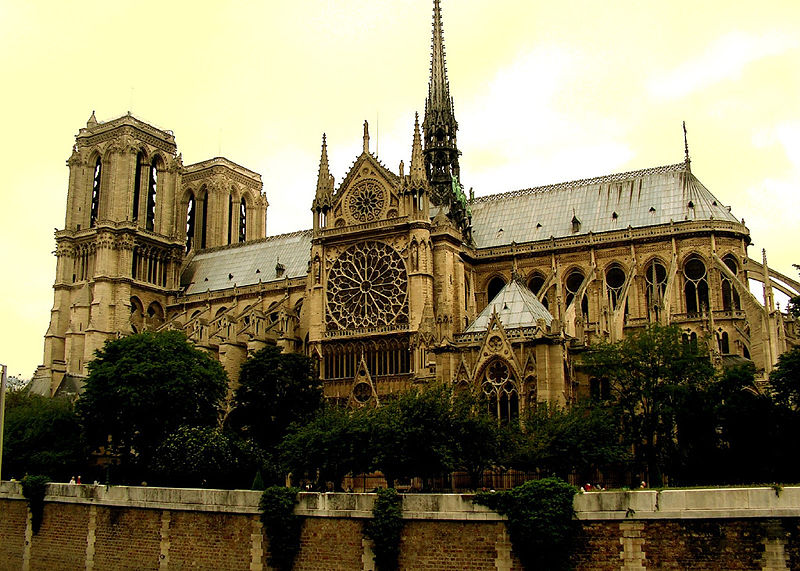Speaking of gothic revival architecture, here’s a trivia question for you…
What literary event in 1831 also was a historical event and an architectural event?
The answer: the publication of Victor Hugo’s Notre-Dame de Paris. English translations of this novel, for some reason, are generally named The Hunchback of Notre Dame.
I finished reading this novel a couple of weeks ago. I can’t say that I recommend it. It is almost unbearably bleak and pessimistic. It is, however, a superb and classic gothic novel. There is almost no daylight in this book, unless it’s a hanging at noon. Instead it’s the dark streets of medieval Paris, the dark vaults of Notre Dame cathedral, blown-out candles, and bats and bells. There are superstitions about the supernatural, including the moine bourru, which I think is generally translated to werewolf in English, though the French moine is a monk, and so moine bourru hints at the dark side of ecclesia.
When Hugo published Notre-Dame de Paris, the cathedral had fallen into near ruin from centuries of neglect. Paris was even considering tearing it down. But Hugo’s book sparked a huge interest in the cathedral, and tourists started coming to Paris just to see the cathedral. This led to renovations that started in 1845. It probably would be fair to say that Victor Hugo saved Notre Dame cathedral.
Certainly there were some grand examples of gothic revival architecture. But in America, there arose an everyman’s version of gothic revival — carpenter gothic.
When I spoke with Rodney Pfotenhauer, the architect who designed the gothic revival cottage I’m building, I asked him if he’s a historian of architecture, since he had worked so many features of gothic revival into such a small house. He said no, he just looks at a lot of pictures.
One other thing before I leave the subject of Notre Dame. I have made no secret of the fact that, by building a gothic revival cottage, putting an organ in it, and putting bat houses in the woods behind it, I’m indulging in a rather elaborate pun. I hope that, when my house is finally done and landscaped, that people who see the house for the first time will break out laughing. That will be the correct response. When one of the framers working on my house stood inside the foundation and looked at the blueprints for the first time, he started grinning, and I’m pretty sure he laughed. He got it.
I am so glad that, owing to my friend Catherine, who dragged me to a Sunday afternoon organ concert followed by mass, I’ve heard the Cavaillé-Coll organ at Notre Dame. Shortly after this, I wrote in a letter to a friend:
Catherine and I went to an organ recital on a Sunday evening at Notre Dame. Cesar Franck, I can tell you, sounds just as bad at Notre Dame as he does anywhere else.
But we stayed for the evening mass. It was an incredible show to a packed house, with excellent music, awesome acoustics, beautiful theater, and altar boys that Oscar [Wilde] would have loved. The organ postlude was a barn-burner, a great swelling of sound in the back of the cathedral like an approaching thunderstorm that swept in and struck hard, rattling the windows and stopping the crowd in the aisles as they were leaving, to look up at the organ as though they were expecting lightning to strike at any second.





I don’t get it… What was the framer grinning at while standing in the foundation? And why would people laugh when seeing your house?? Any plans for gargoyles anywhere??